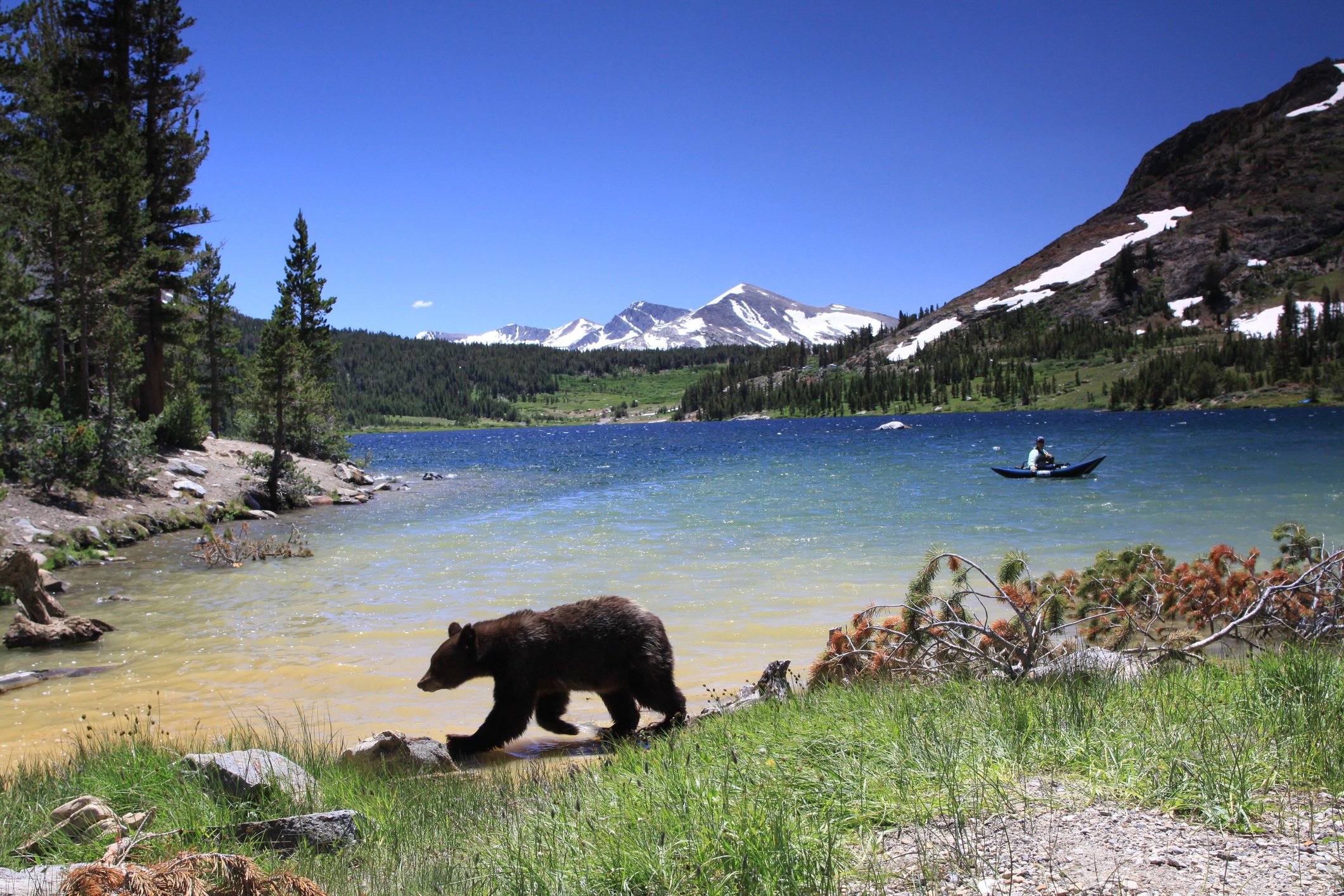
Get Bear Smart Outdoors
Hiking, mountain biking, camping, hunting, and fishing in bear habitat is an exhilarating way to spend a day, week, or month. And seeing a bear often enhances your wilderness experience. Before heading out, make sure you know what to do to keep yourself and bears safe.
In this menu section, we go into detail about how to store food, garbage, and gear; how to avoid bear encounters, and what to do if you see one; and some extra considerations for bear safety. But here are some basics on how to make your recreating experiences positive:
Avoid negative bear encounters. Make noise, travel in groups, avoid recreating at dusk and dawn, and watch for bear sign to avoid surprising a bear.
Be aware of how some activities put you at greater risk of encountering a bear. Runners and bikers are moving fast and often quietly, making it more likely they’ll surprise a bear. Stay alert to your surroundings (leave the headphones at home), make noise as you travel, and know what to do in a bear encounter. If hunting or fishing, take steps where you can to avoid encounters.
Always carry bear spray. Keep it accessible and on your person (not in your backpack or on your bike), and know how to use it.
Keep a clean camp. Use bear-resistant containers or other bear-resistant storage methods (like bear hangs) to store food and other attractants, and place them a safe distance from where you’re sleeping. Never bring food into your tent. Keep your fire pit clean and free of food residue, and dispose of grey water away from camp or in designated areas.
Know what to expect before you go. Check with local wildlife officials to see if there has been bear activity along your route. Obey all trail closures and information signs. If there are bears active in the area, consider choosing a different route. If you’re spending the night, make sure you know about local food storage requirements.
Keep pets on a leash and under control. Don’t leave them unattended outside.
Explore This Section
More Resources
Brochure: “Bear Viewing Guide”
Website: Tips for wildlife photography and viewing, Center for Wildlife Information
One-page guide: “Recreating in Bear Country,” People and Carnivores
One-page guide: “Whistler Bear Smart Visitor’s Guide” in English, German, Dutch, Chinese, French, and Spanish
Video: “Staying Safe in Bear Country,” in English and French, International Bear Association
